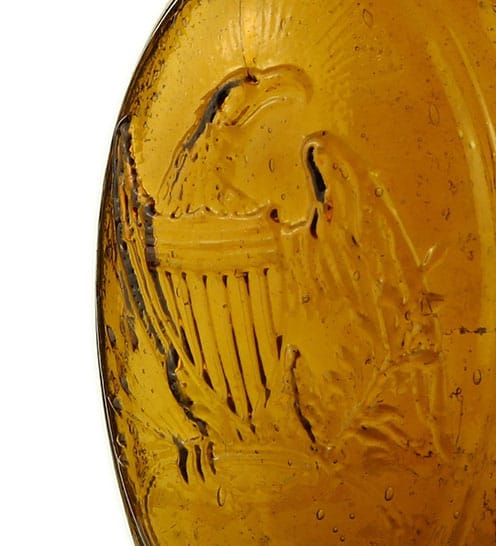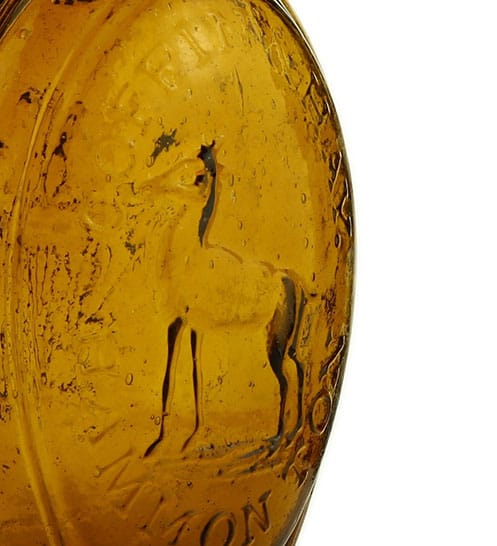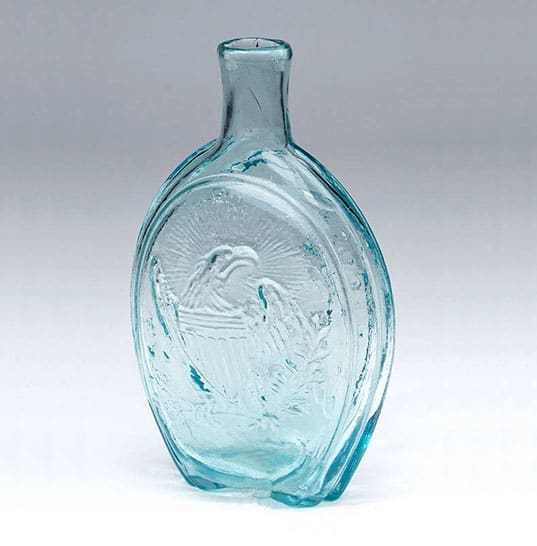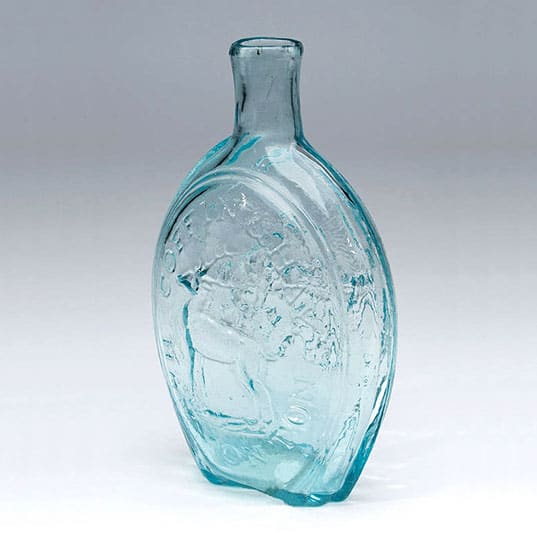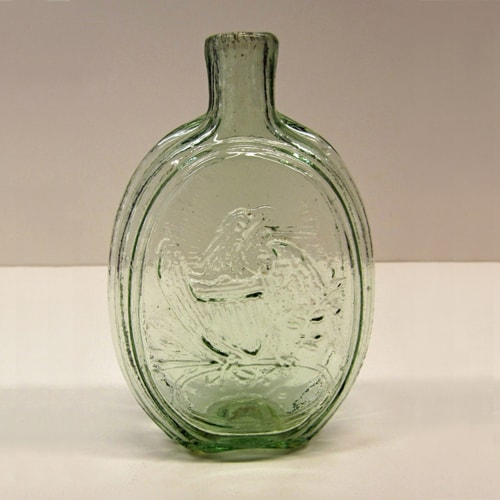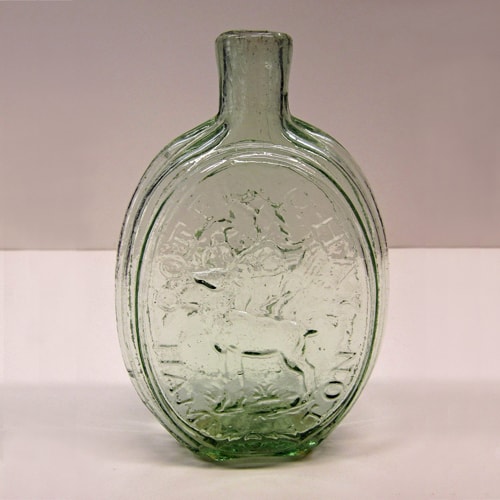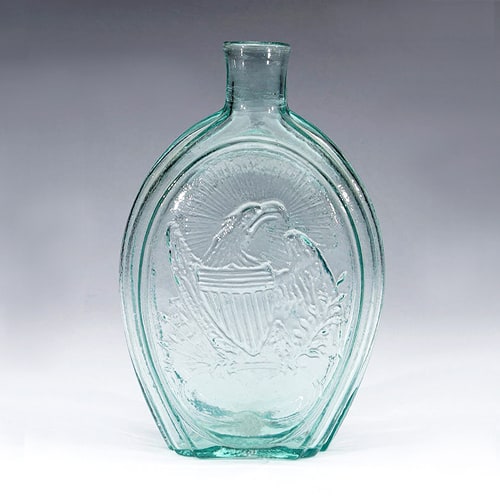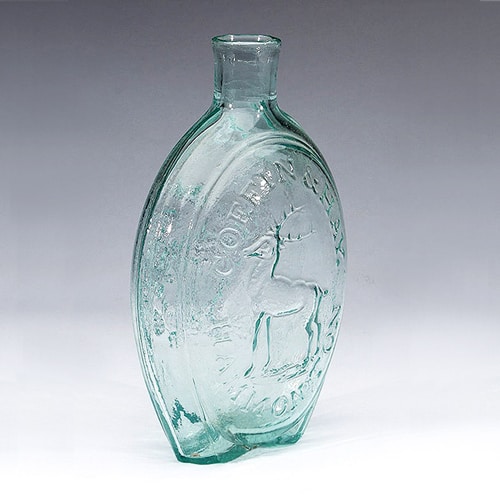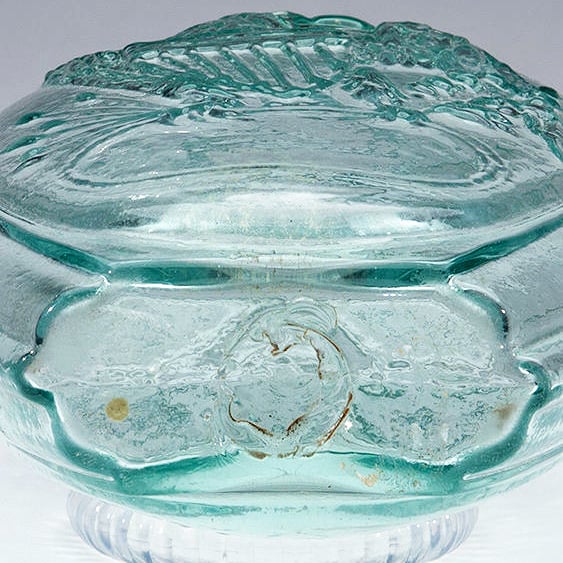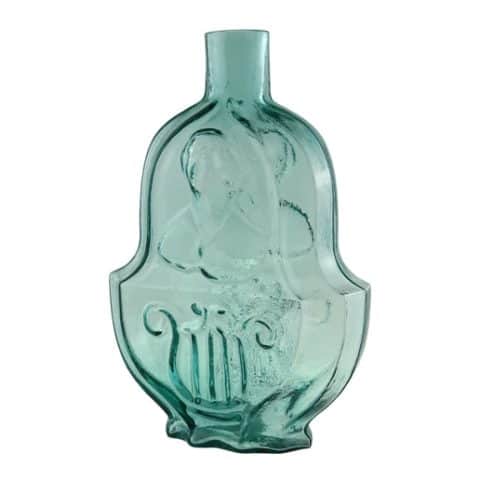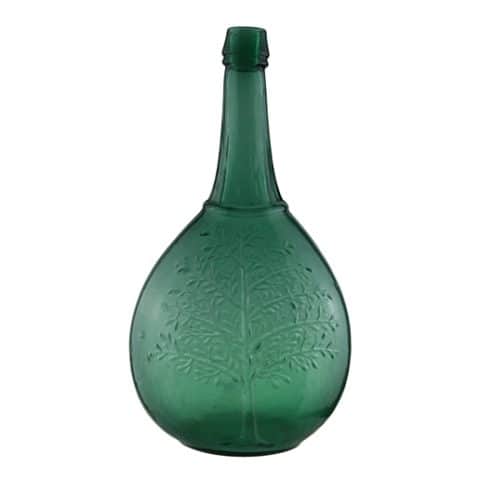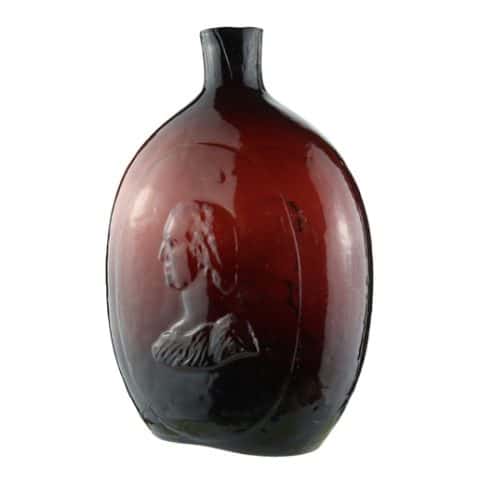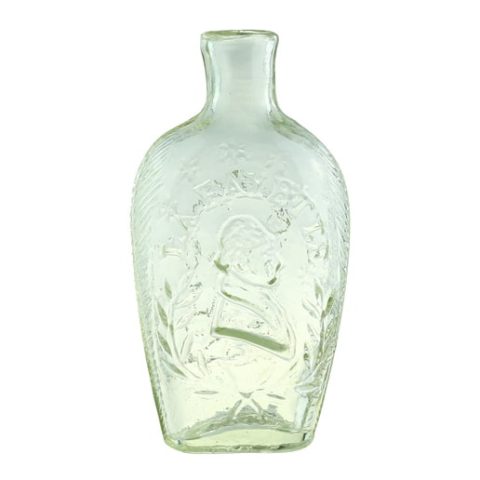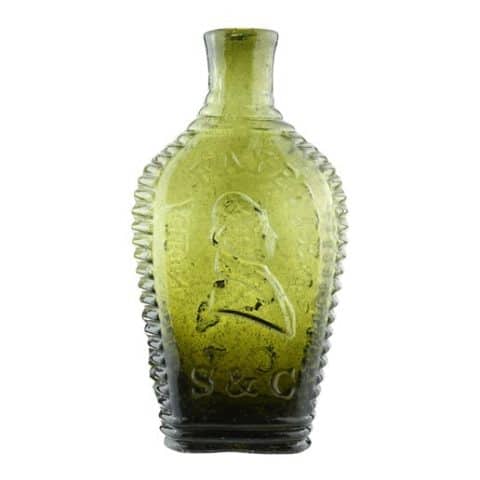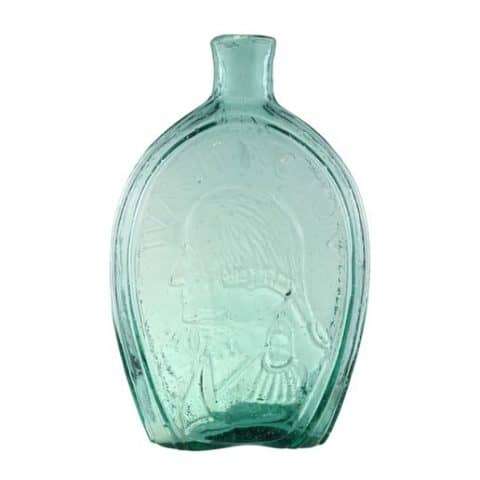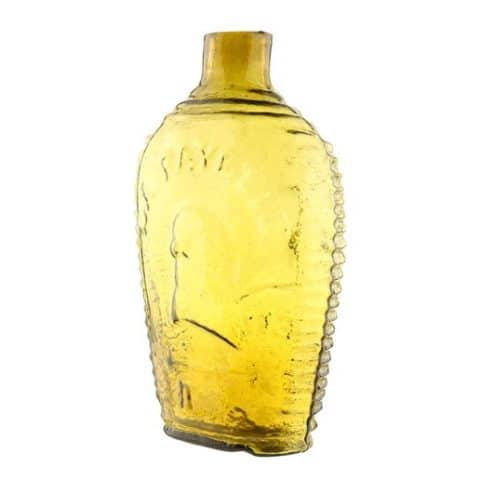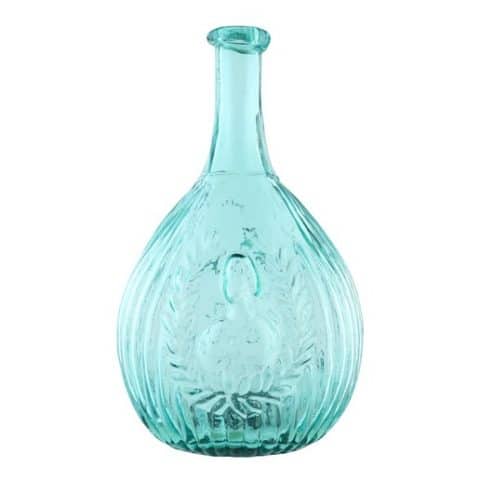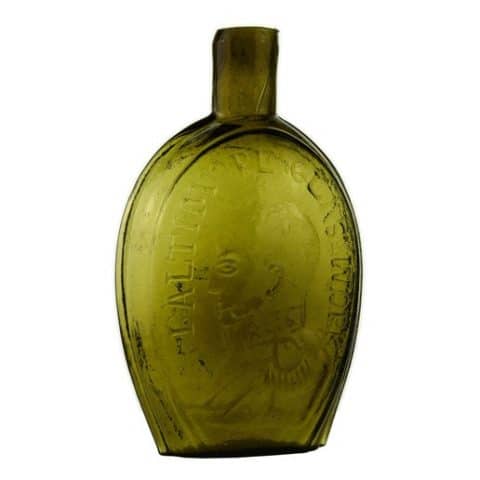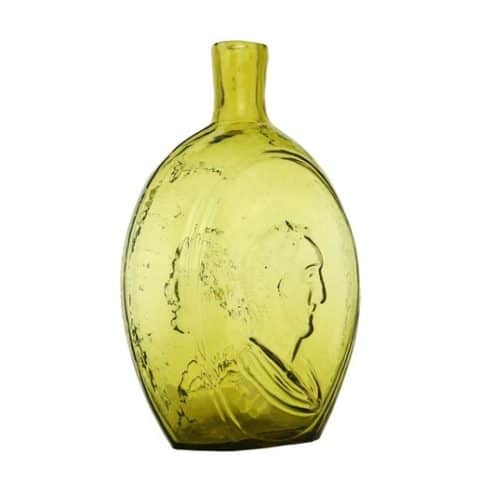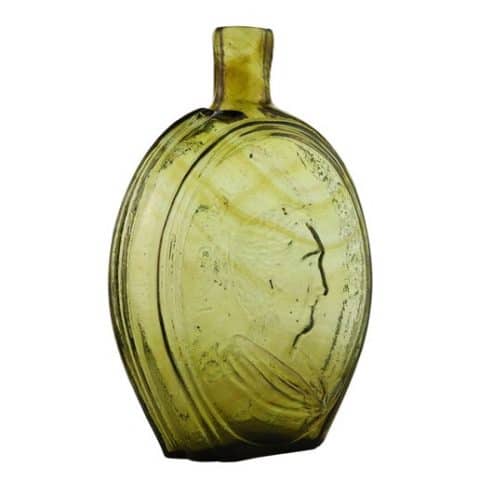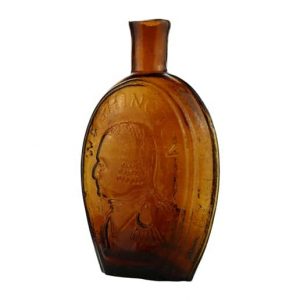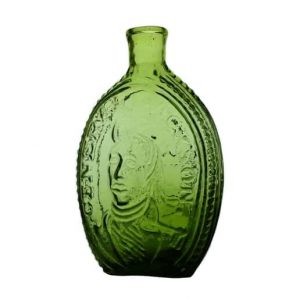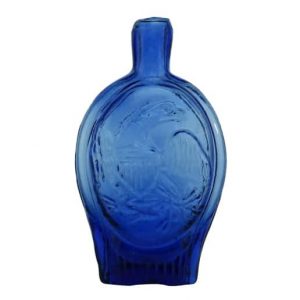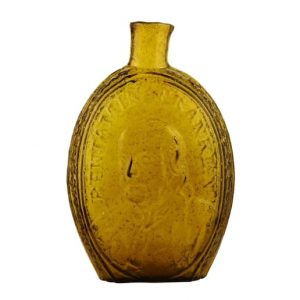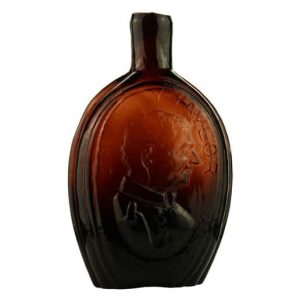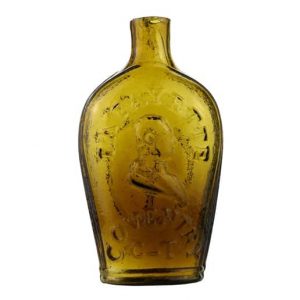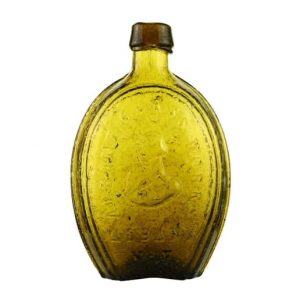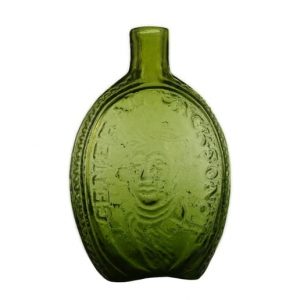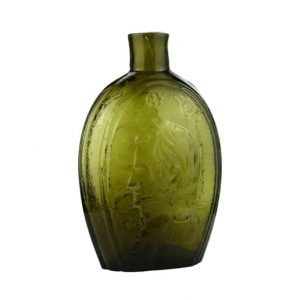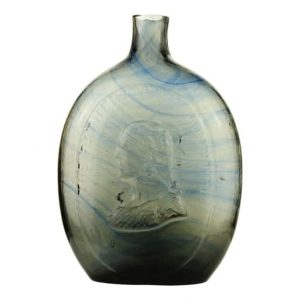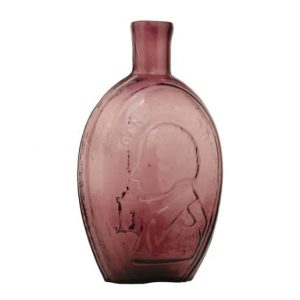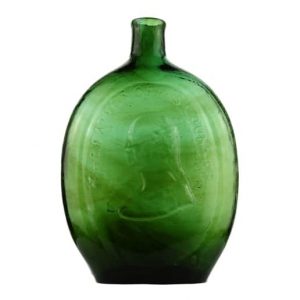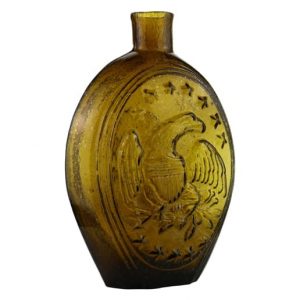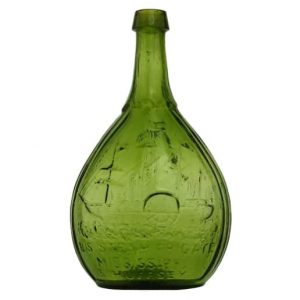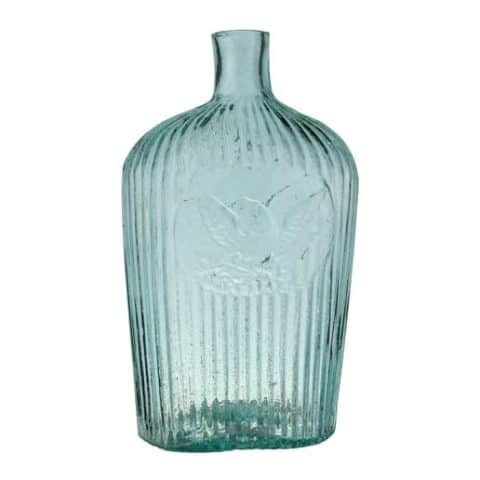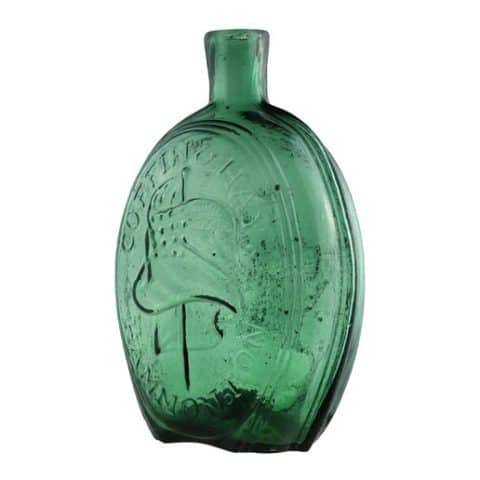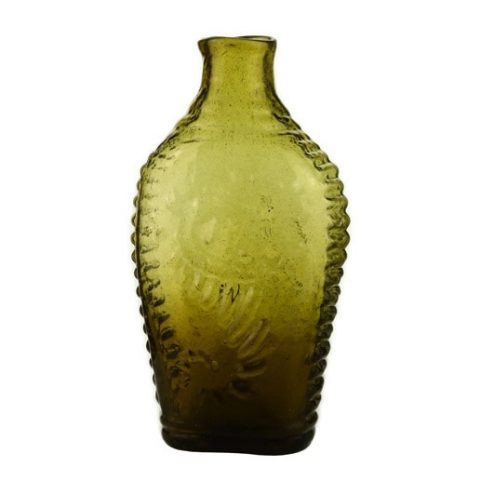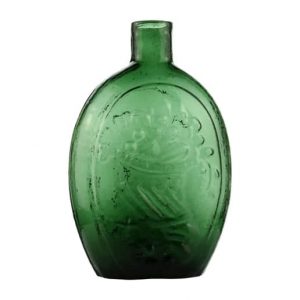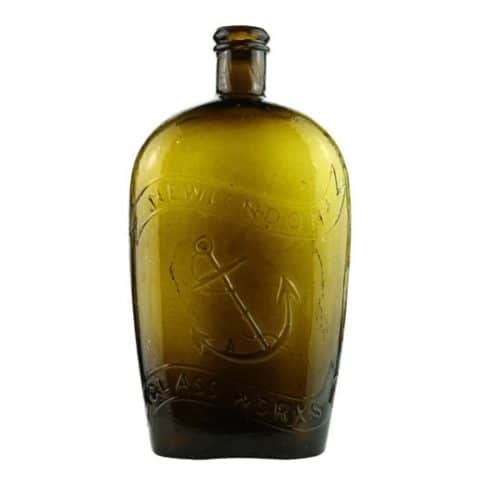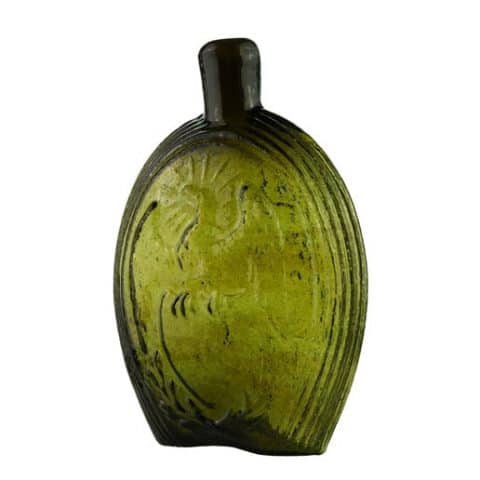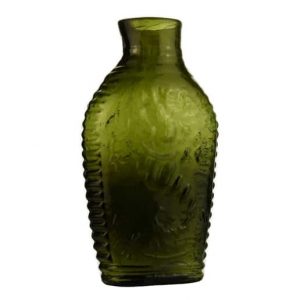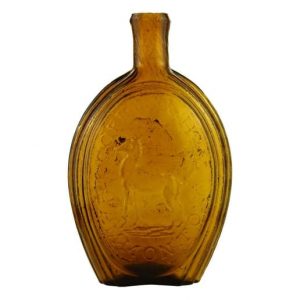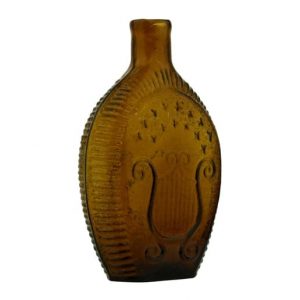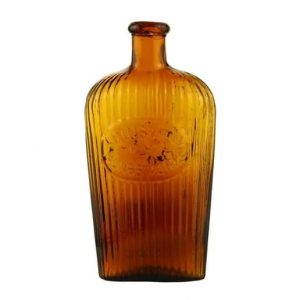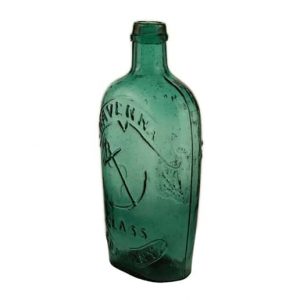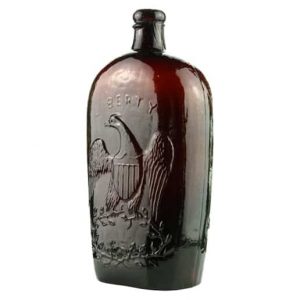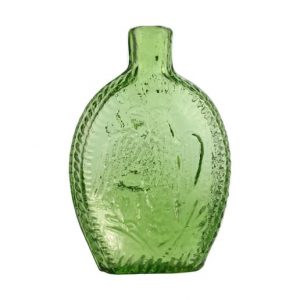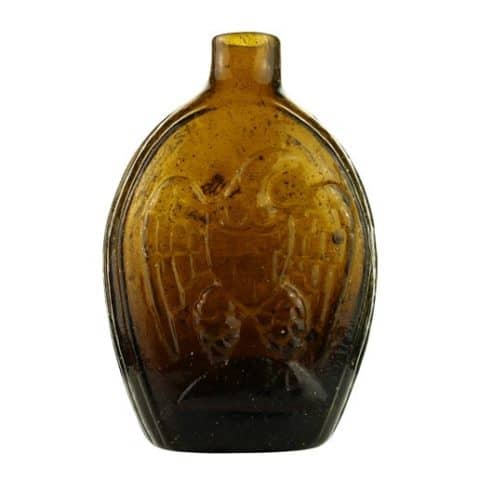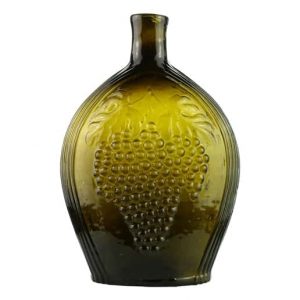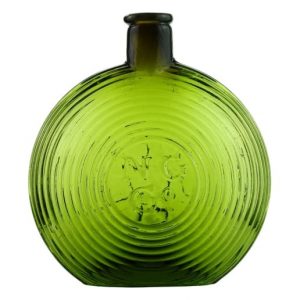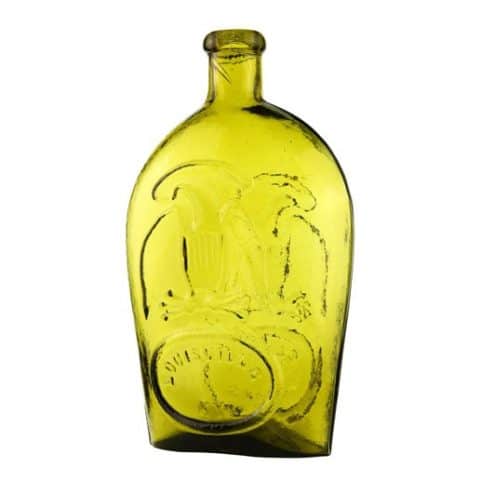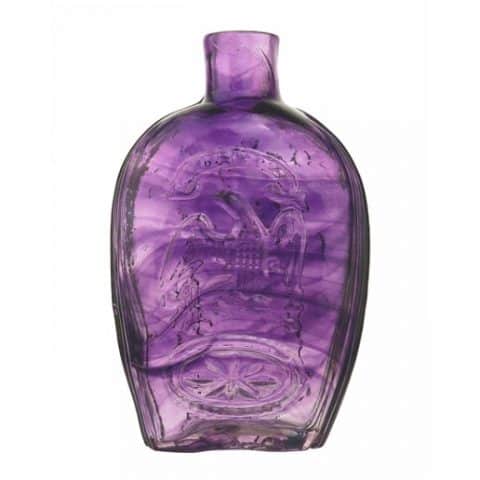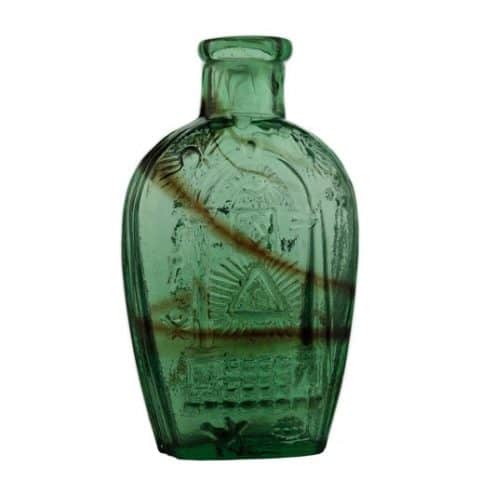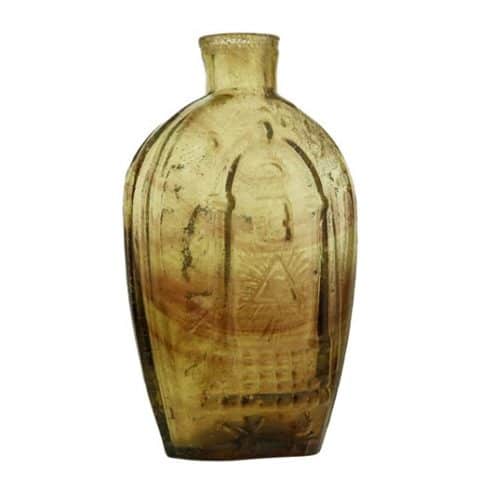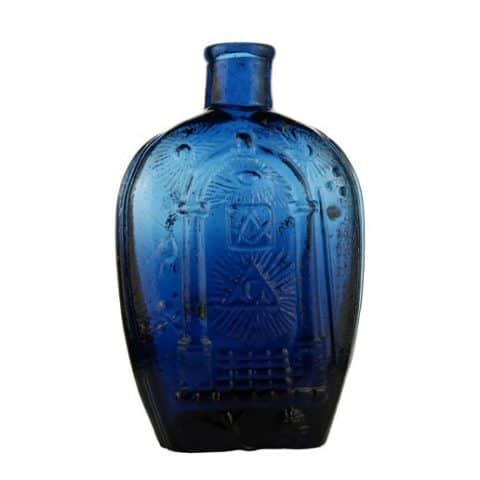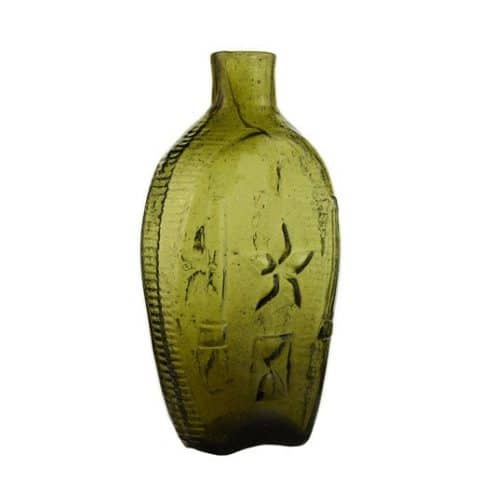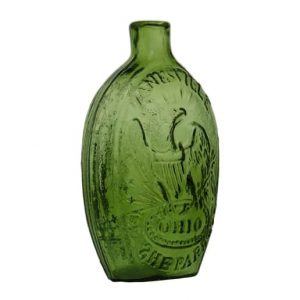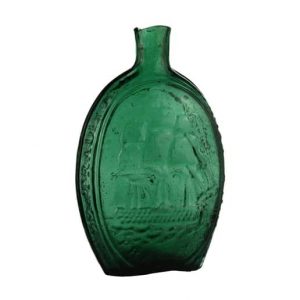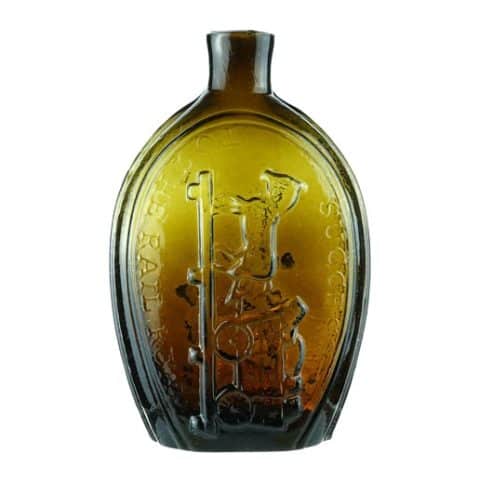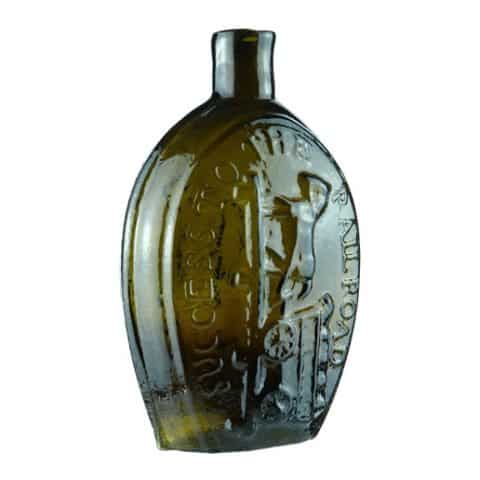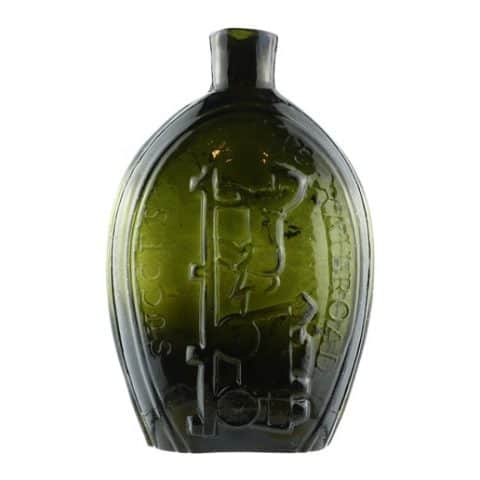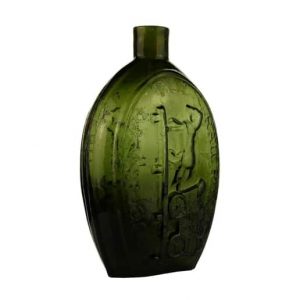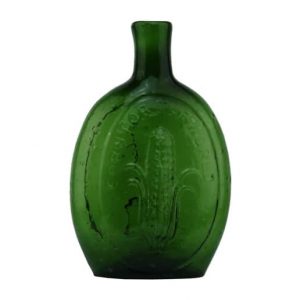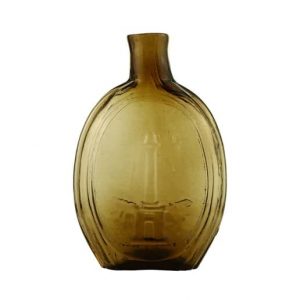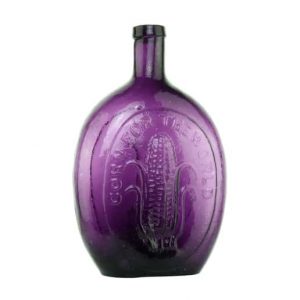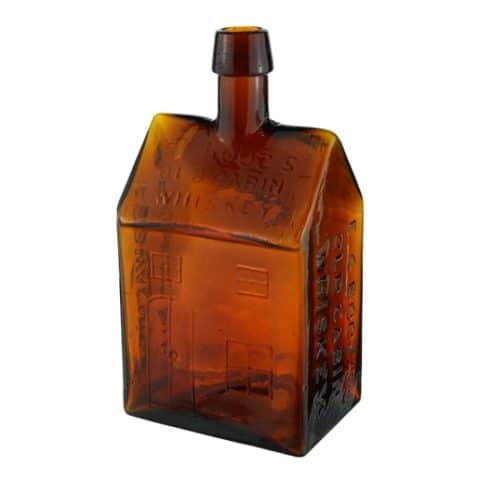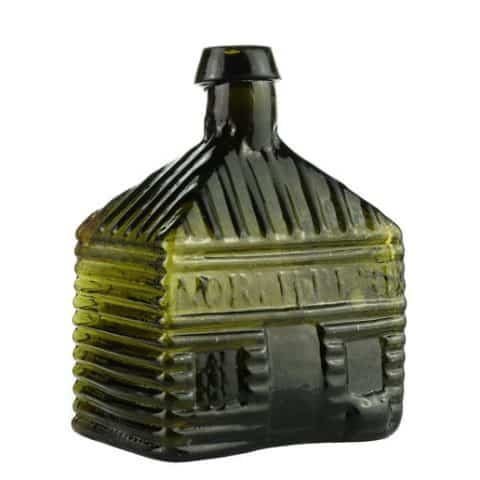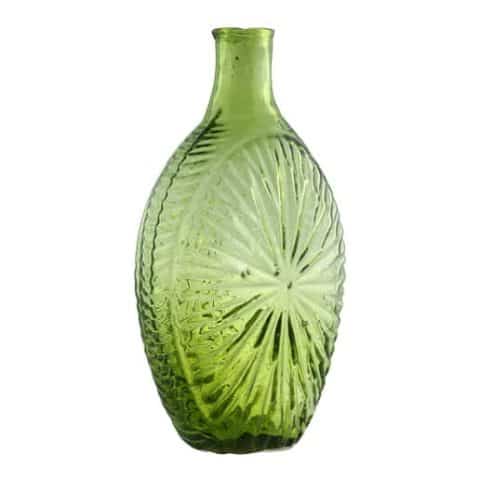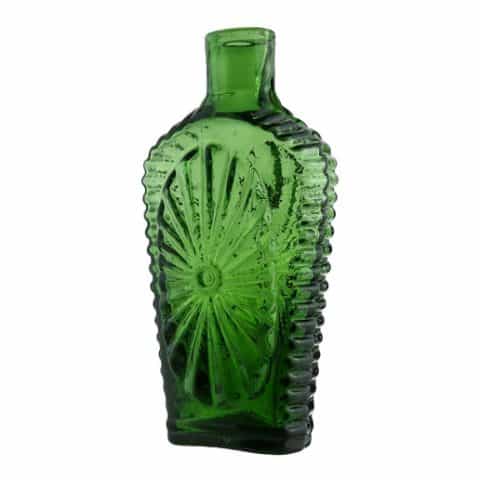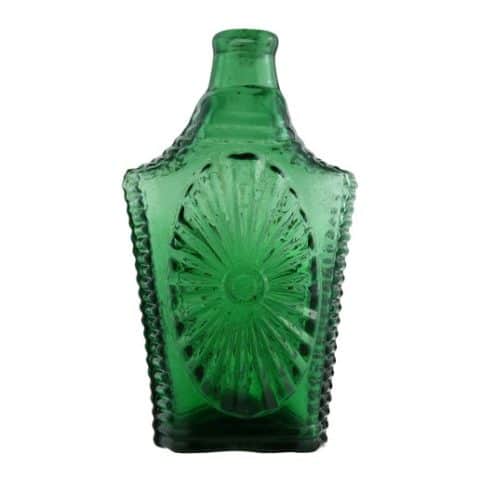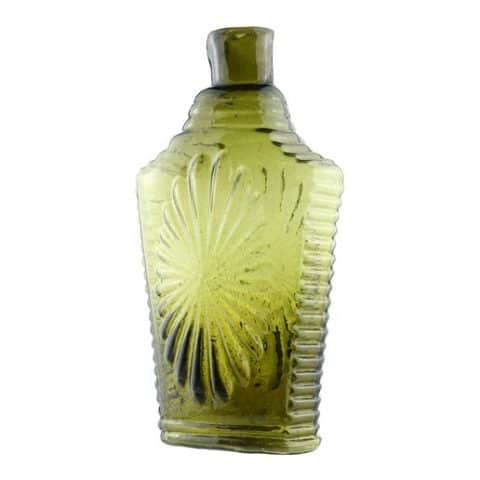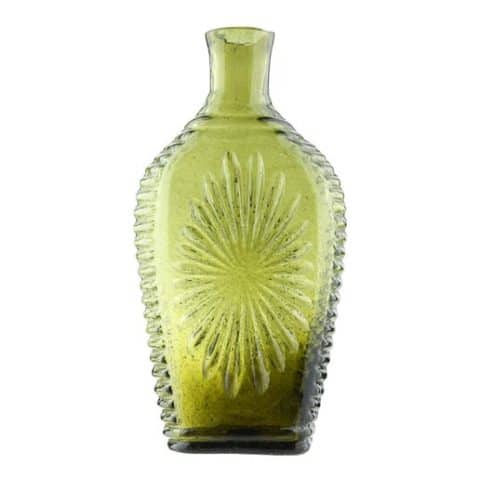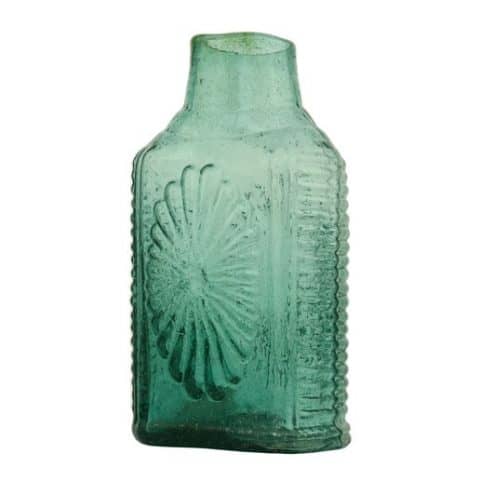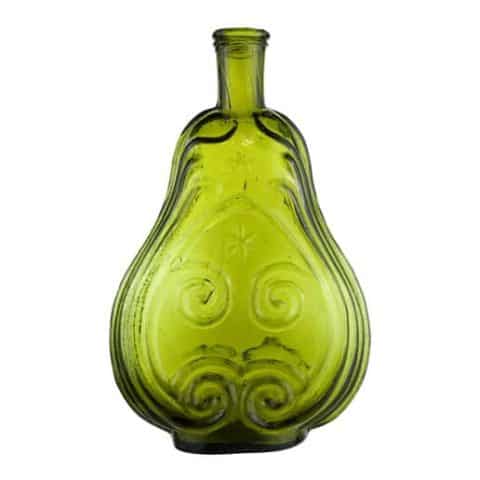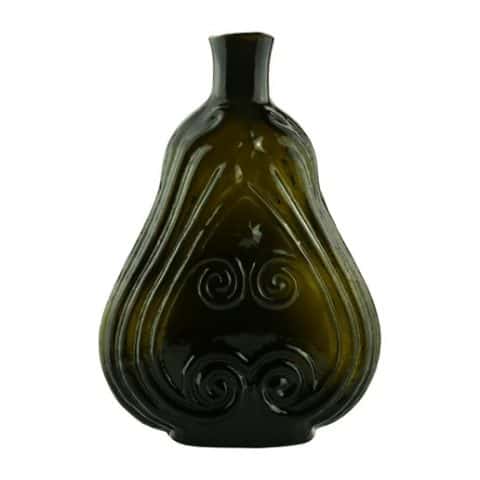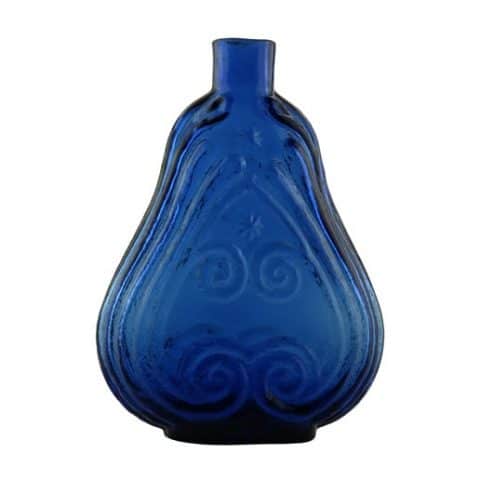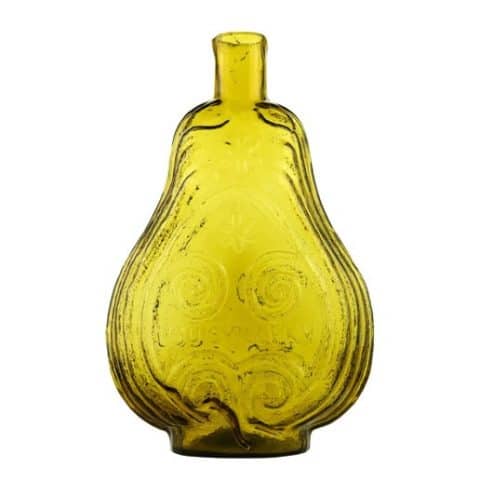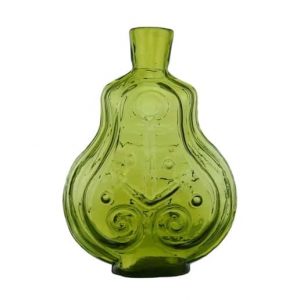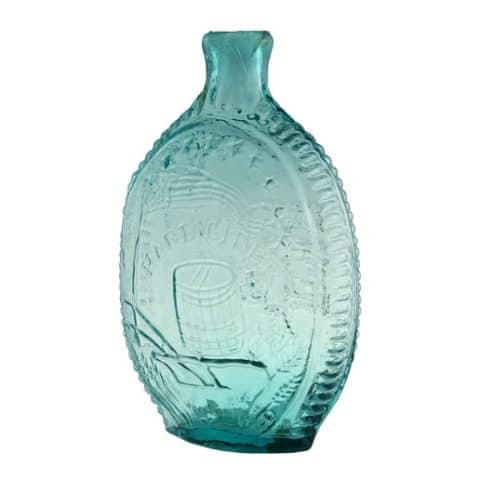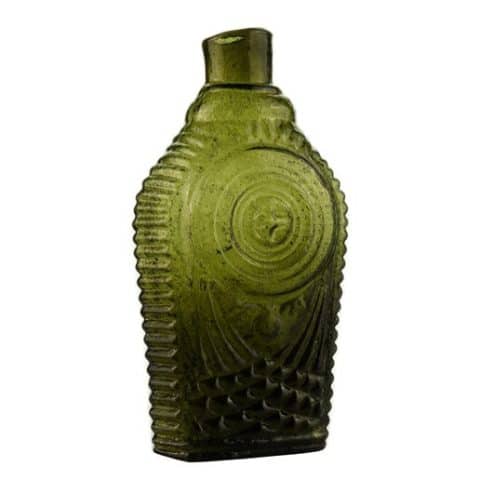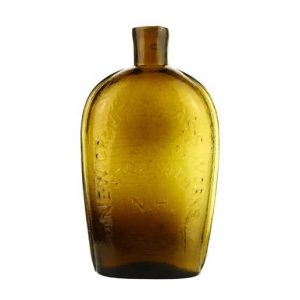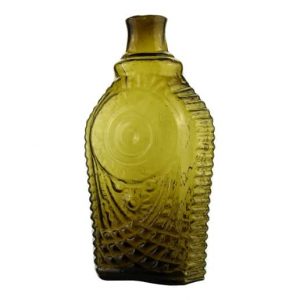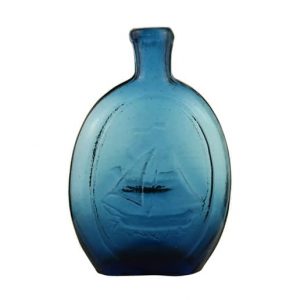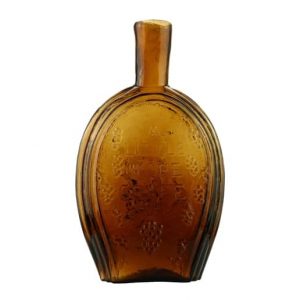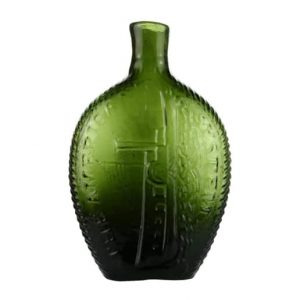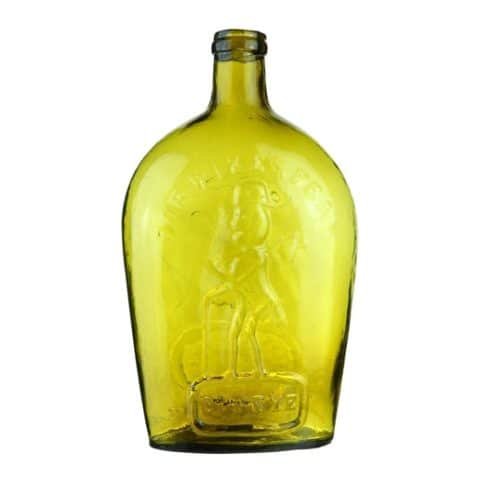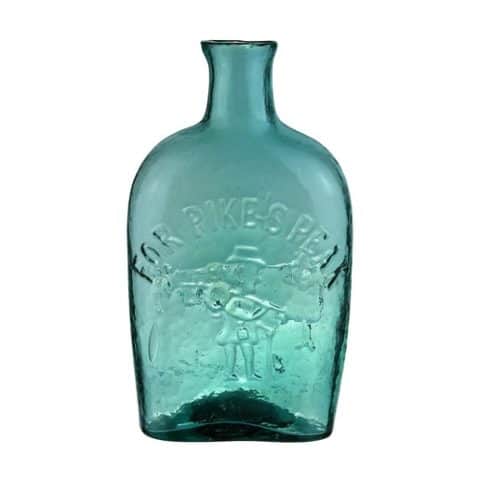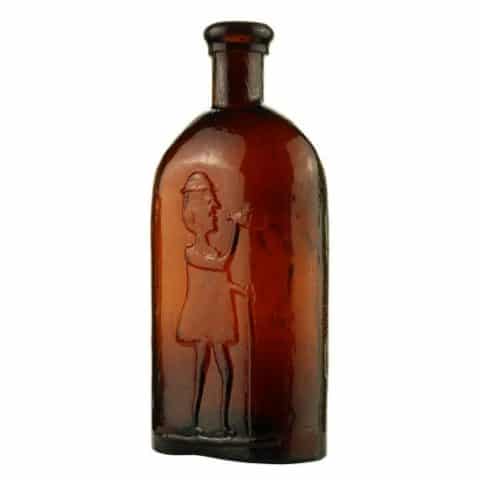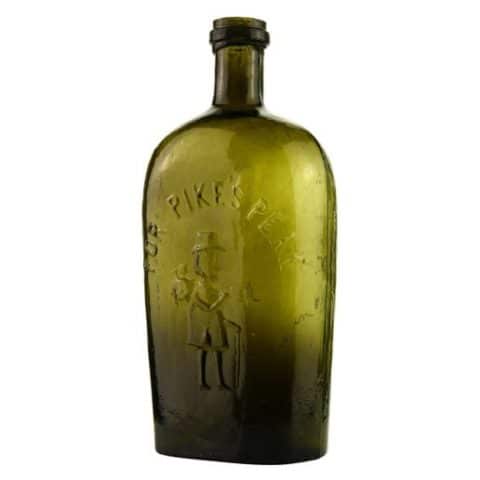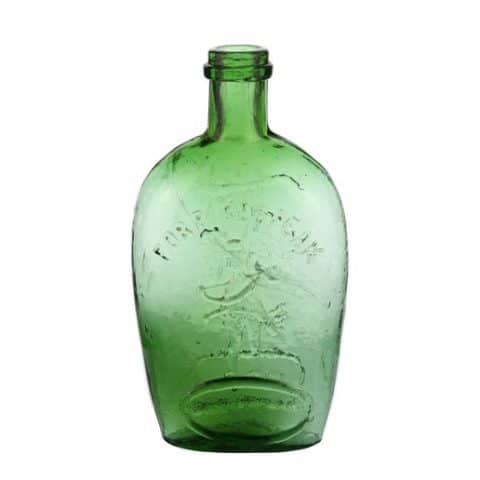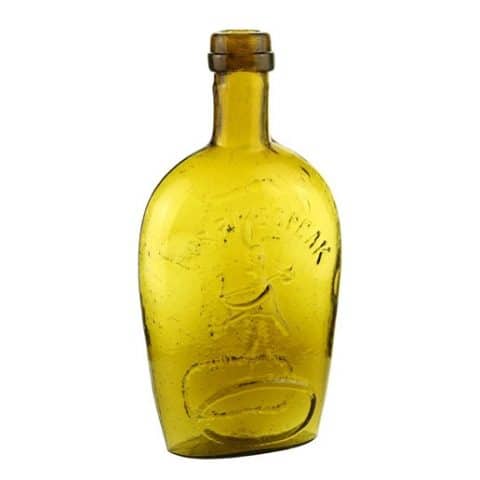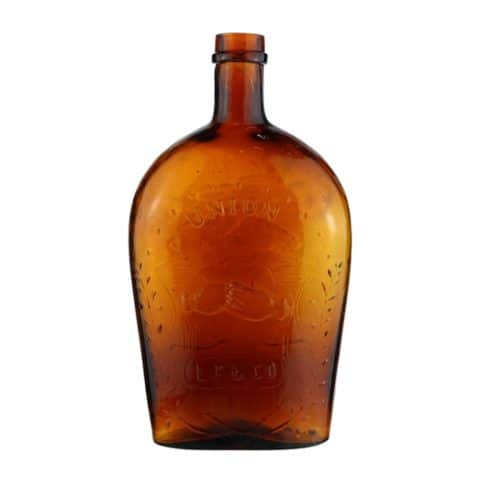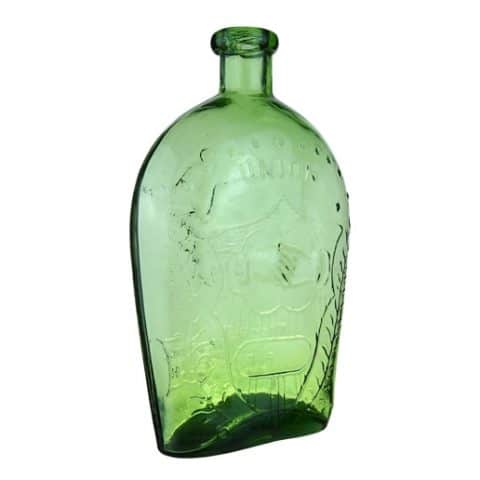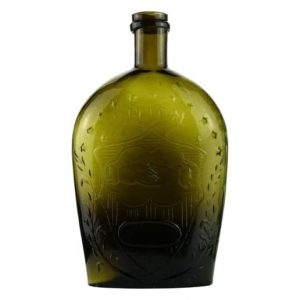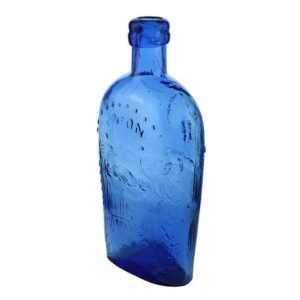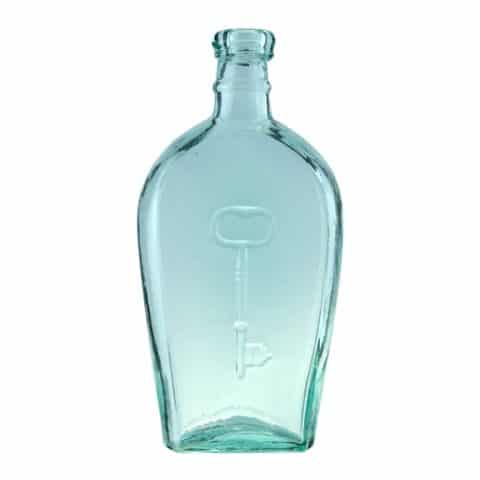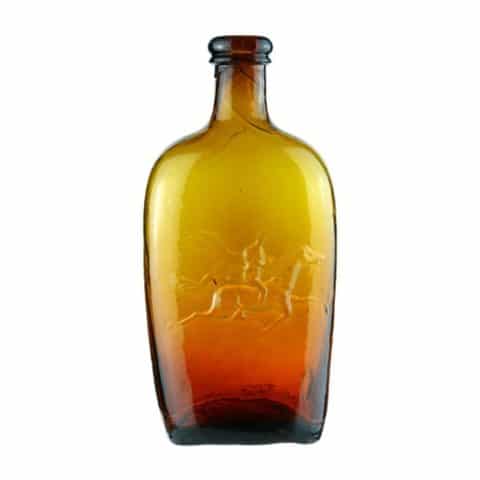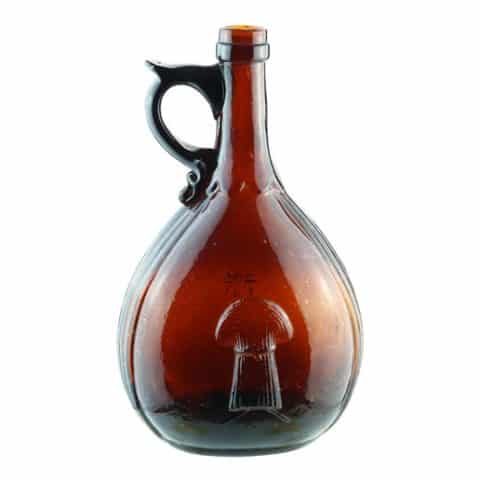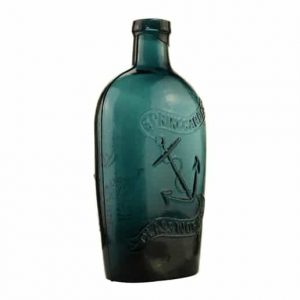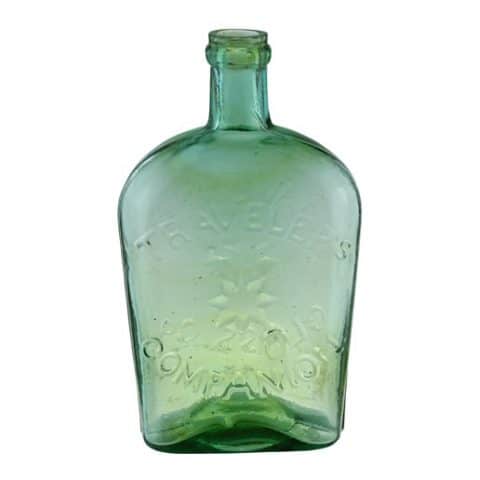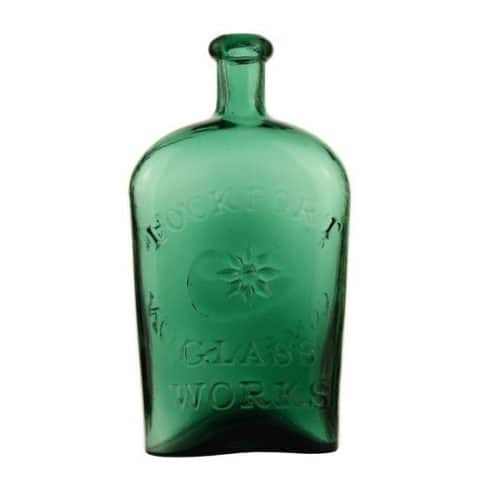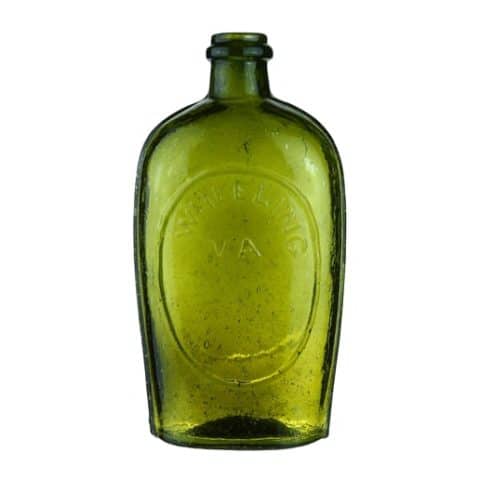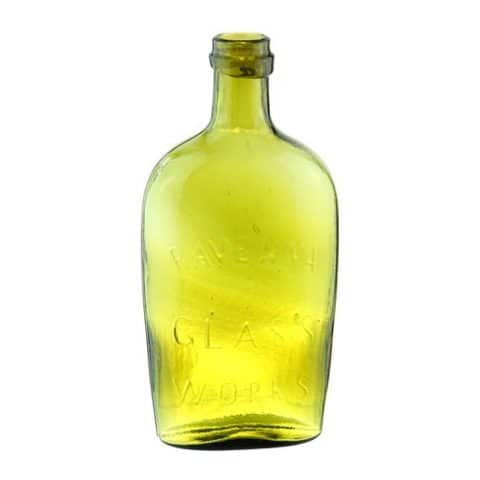GII-49 Eagle – Stag Flask
GII – 49
Eagle – Stag And “Coffin & Hay. Hammonton” Flask
Coffin & Hay Manufactory, Hammonton, New Jersey
Yellow – Amber Pint
Provenance: Anonymous
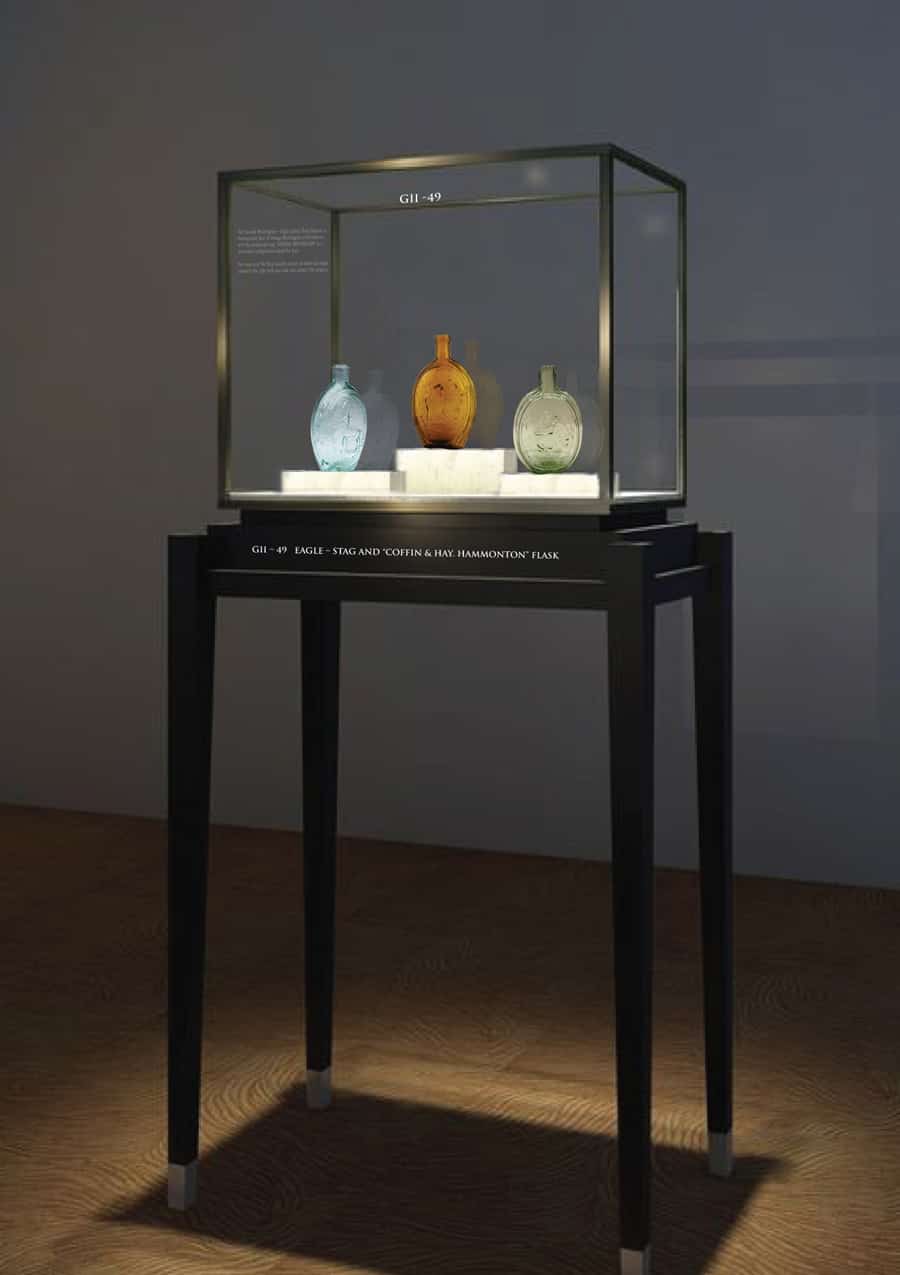
This extremely rare GII-49 Eagle-Stag flask is hardly ever seen by antique bottle collectors. If you do see one, it will probably be in aquamarine glass. This gorgeous yellow-amber pint has it all. The prominently embossed eagle and stag make the flask stand out from others with exquisite craftsmanship and detail. We are delighted to have this example in our collection.
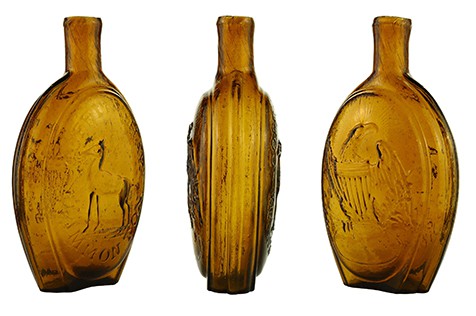
The Eagle-Stag flask features an embossed American eagle placed within an oval on the primary flask face with the eagle head turned to the right. The wings are slightly raised with the left-wing foreshortened to give the illusion of a more three-dimensional eagle. The shield has seven vertical bars with three horizontal bars above those. The eagle has seven arrows or thunderbolts in the left talon and a large olive branch in the right talon. Very fine sunrays adorn the eagle’s head. The eagle sits on an oval frame with very fine inner beading.
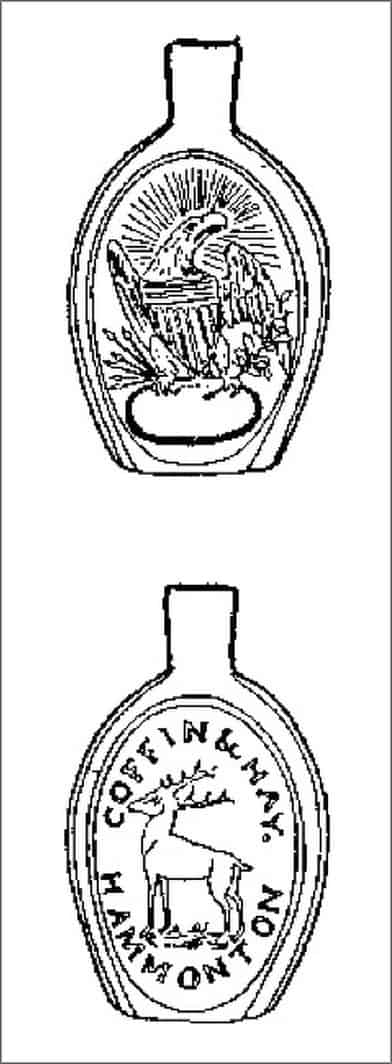
The reverse of the flask depicts an embossed stag standing erect with antlers facing left. The stag is standing on vegetation in a field. The copy ‘COFFIN & HAY.’ is embossed in a convex semicircle above the deer, and ‘HAMMONTON’ is embossed in a concave semicircle below the deer.
The flask edges are vertically ribbed with a heavy medial rib. The pint flask has a plain lip and pontil mark.
Known glass colors are aqua which is rare, pale yellow-green is considered very rare, and dark amber (black) and olive amber (black) is extremely rare. This museum example is extremely rare in this vibrant yellow-amber color.
The flask was made by the Coffin & Hay Manufactory in Hammonton, New Jersey, from 1836 to 1838..
1836-1838: The Hammonton Glass Works years of Bodine Coffin and Andrew Hay
William Coffin Sr. owned and operated the Hammonton Glass Works when his son William Coffin Jr. left to become a partner in the Millville glassworks in 1828. William Sr. continued to run the works until 1836 when he leased the works to his son Bodine Coffin and his son-in-law Andrew K. Hay. They would operate Coffin & Hay glassworks from January of 1836 until November of 1838 when a disastrous fire destroyed the factory. Subsequently, the Coffin and Hay company was dissolved in November of 1839. Hay then moved to Winslow, New Jersey, and William Coffin opened the Winslow Glass Works. Thus, two Coffin & Hay partnerships represented two separate glassworks, but the Hammonton Glass Works ended its Coffin & Hay ownership in late 1838.
Primary Image: GII-49 Eagle-Stag flask imaged on location by Alan DeMaison, FOHBC Virtual Museum Midwest Studio
Support Images: Auction Lot 48: Eagle – Stag And “Coffin & Hay. / Hammonton” Historical Flask, Coffin and Hay Manufactory, Hammonton, New Jersey, 1820-1840. Aquamarine, sheared mouth – pontil scar, pint; (light exterior high point wear, shallow 3/4 inch chip on mouth top edge, 1/4 inch pontil flake comes to base edge). GII-49. A handsome flask with attractive embossing. – Norman Heckler, Norman C. Heckler & Company
Support Images: Eagle/Stag Flask. Aquamarine glass; mold-blown; plain lip, pontil mark. Obverse: designs on oval panels; American Eagle, head turned to right; wings partly raised and right slightly foreshortened. Shield with seven vertical and three horizontal bars on eagle’s breast. Thunderbolt (six arrows) in eagle’s right talons, large olive branch in left. Very fine sun rays around eagle’s head. Eagle stands on oval frame with very fine inner beading. Similar to GII-49 except slight difference in olive branch. Reverse: stag with antlers, standing erect and facing to left; similar to GII-49 except slight difference in olive branch. Inscription: “COFFIN & HAY” in semi-circle above stag; “HAMMONTON” in semi-circle below. Edges: vertically ribbed, heavy medial rib. – Corning Museum of Glass
Support Images: Auction Lot 108: Eagle – Stag And “Coffin & Hay. / Hammonton” Historical Flask, Coffin & Hay Manufactory, Winslow, New Jersey, 1836-1847. Aquamarine, sheared mouth – pontil scar, pint; (light interior haze in the lower half). GII-49 A strong mold impression and attractive embossing highlight this example. Fine condition. Timothy and Christine Hill collection. – Norman Heckler, Norman C. Heckler & Company
Support: Reference to The Hammonton Glass Works from Historical American Glass.
Support: Reference to American Bottles and Flasks and Their Ancestry by Helen McKearin and Kenneth M. Wilson, Crown Publishers Inc., New York, 1978.
Join the FOHBC: The Virtual Museum is a project of the Federation of Historical Bottle Collectors (FOHBC). To become a member.

